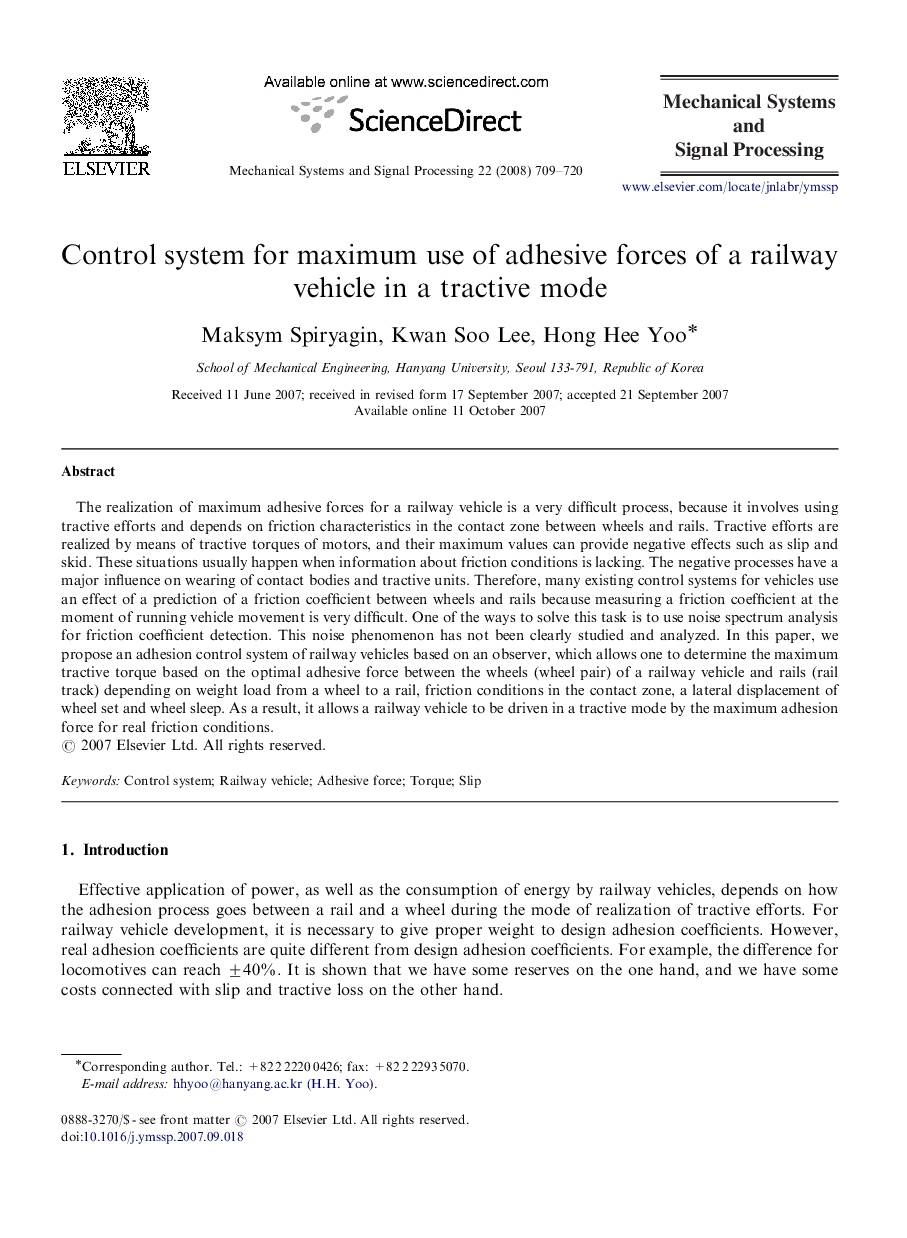| کد مقاله | کد نشریه | سال انتشار | مقاله انگلیسی | نسخه تمام متن |
|---|---|---|---|---|
| 565736 | 875816 | 2008 | 12 صفحه PDF | دانلود رایگان |

The realization of maximum adhesive forces for a railway vehicle is a very difficult process, because it involves using tractive efforts and depends on friction characteristics in the contact zone between wheels and rails. Tractive efforts are realized by means of tractive torques of motors, and their maximum values can provide negative effects such as slip and skid. These situations usually happen when information about friction conditions is lacking. The negative processes have a major influence on wearing of contact bodies and tractive units. Therefore, many existing control systems for vehicles use an effect of a prediction of a friction coefficient between wheels and rails because measuring a friction coefficient at the moment of running vehicle movement is very difficult. One of the ways to solve this task is to use noise spectrum analysis for friction coefficient detection. This noise phenomenon has not been clearly studied and analyzed. In this paper, we propose an adhesion control system of railway vehicles based on an observer, which allows one to determine the maximum tractive torque based on the optimal adhesive force between the wheels (wheel pair) of a railway vehicle and rails (rail track) depending on weight load from a wheel to a rail, friction conditions in the contact zone, a lateral displacement of wheel set and wheel sleep. As a result, it allows a railway vehicle to be driven in a tractive mode by the maximum adhesion force for real friction conditions.
Journal: Mechanical Systems and Signal Processing - Volume 22, Issue 3, April 2008, Pages 709–720